This article explores the fascinating world of kimchi, its health benefits, preparation methods, and cultural significance, revealing why this fermented delicacy is celebrated as a superfood.
What is Kimchi?
Kimchi is a traditional Korean dish made from fermented vegetables, primarily napa cabbage and radishes, seasoned with a variety of spices. Its origins can be traced back to ancient Korea, where it was developed as a means of preserving vegetables through the winter months. Today, kimchi has evolved into numerous variations, each reflecting regional tastes and preferences.
Why is Kimchi Considered a Superfood?
Kimchi is regarded as a superfood due to its rich nutritional profile. It is loaded with vitamins, minerals, and probiotics that contribute to overall health. The fermentation process enhances the bioavailability of nutrients, making them easier for the body to absorb. This section delves into the essential nutrients that make kimchi a powerhouse for health enthusiasts.
Health Benefits of Kimchi
- Probiotics and Gut Health: The beneficial bacteria found in kimchi promote a healthy gut microbiome, aiding digestion and enhancing overall gut health.
- Rich in Antioxidants: Kimchi contains a variety of antioxidants that combat oxidative stress, which is linked to chronic diseases.
- Boosts Immune Function: Regular consumption of kimchi can strengthen the immune system, helping the body fend off illnesses.
How to Make Kimchi at Home
Making kimchi at home is a rewarding experience that allows you to customize flavors to your liking. Here’s a step-by-step guide:
1. Gather essential ingredients: napa cabbage, Korean red pepper flakes (gochugaru), garlic, ginger, and fish sauce.2. Prepare the cabbage: Cut the cabbage and soak it in saltwater for several hours to draw out moisture.3. Create the spice paste: Blend garlic, ginger, fish sauce, and gochugaru to form a thick paste.4. Mix and pack: Combine the cabbage with the spice paste and pack it tightly into a jar.5. Ferment: Leave the jar at room temperature for 1-5 days, depending on your taste preference, then refrigerate.
Different Types of Kimchi
Kimchi is not a one-size-fits-all dish; it comes in various styles, each with unique flavors and ingredients. Here are a couple of popular types:
- Baechu Kimchi: Made with napa cabbage, this is the most common variety, known for its crunchy texture and spicy flavor.
- Kkakdugi: This type is made with diced radish, offering a different texture and flavor profile, often enjoyed in soups.
Incorporating Kimchi into Your Diet
Integrating kimchi into your meals can enhance both flavor and nutrition. Here are some practical tips:
- Kimchi Fried Rice: A delicious way to use leftover rice, simply stir-fry with kimchi and your choice of protein.
- Kimchi Tacos: Add a twist to your taco night by using kimchi as a topping for a spicy kick.
Kimchi’s Cultural Significance
Kimchi holds a significant place in Korean culture and history. It is more than just a dish; it represents a way of life and a connection to family traditions. The communal practice of Kimjang, or kimchi-making, fosters community bonds and reflects the importance of sharing food. As kimchi gains popularity worldwide, its influence on global cuisine is undeniable.
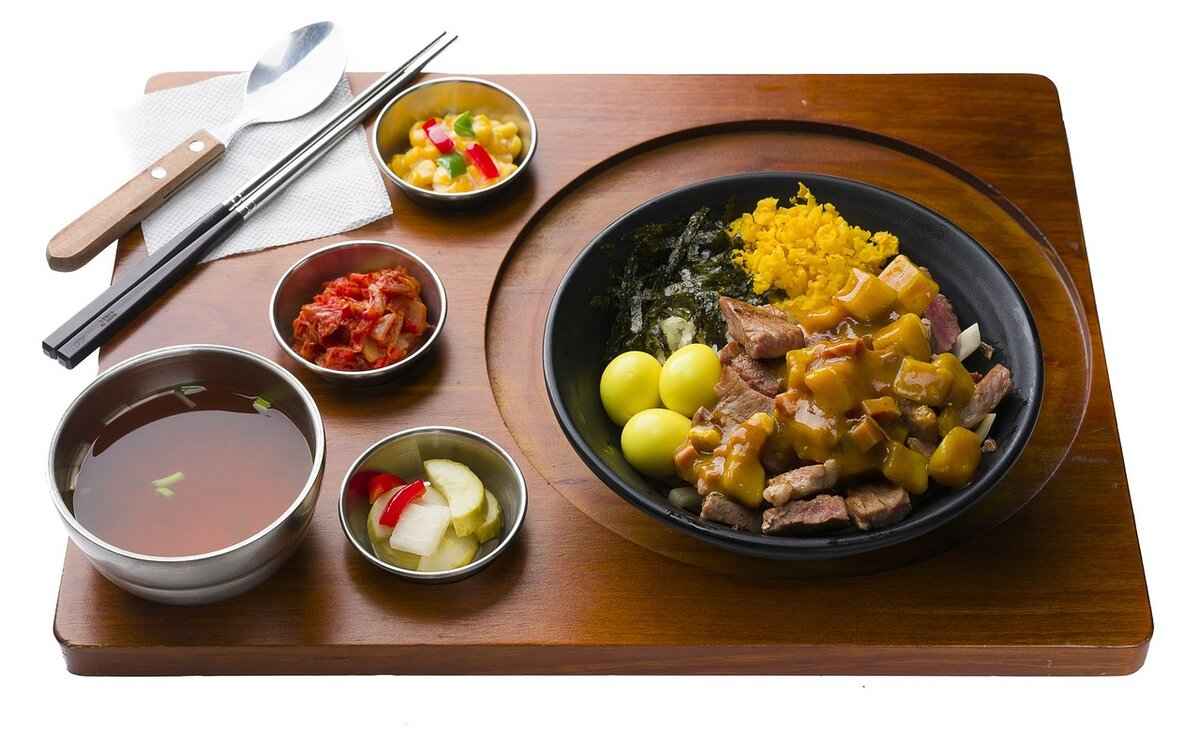
What is Kimchi?
Kimchi is not just a dish; it is a symbol of Korean culture and a staple in Korean households. This traditional fermented dish primarily consists of napa cabbage and radishes, but its preparation can vary significantly across regions and families. The vegetables are seasoned with a mix of spices, including garlic, ginger, and red pepper flakes, which contribute to its distinct flavor and vibrant color.
The origins of kimchi date back thousands of years, with its earliest forms being simple salted vegetables. Over time, with the introduction of various spices and the fermentation process, kimchi evolved into the complex dish that is celebrated today. The fermentation process not only enhances the flavor but also increases the dish’s nutritional value, making it a favorite among health enthusiasts.
Understanding the different variations of kimchi is essential to appreciating its role in Korean cuisine. There are over 200 documented types of kimchi, each with its own unique ingredients and preparation methods. For instance, Baechu Kimchi is the most common variety, made primarily with napa cabbage, while Kkakdugi is a cubed radish kimchi that offers a different texture and flavor profile. Additionally, seasonal variations exist, where ingredients are adapted based on what is available, showcasing the versatility of kimchi.
Kimchi is often enjoyed as a side dish, known as banchan, accompanying almost every meal in Korea. Its tangy, spicy flavor complements a wide range of dishes, enhancing the overall dining experience. Furthermore, kimchi is not only a culinary delight but also a nutritional powerhouse. It is rich in vitamins, minerals, and probiotics, making it beneficial for gut health and overall well-being.
Incorporating kimchi into your diet can be both delicious and healthful. It can be used in various ways, from stir-fries and soups to being a topping for rice dishes and tacos. The adaptability of kimchi makes it a favorite not just in Korean cuisine but also in fusion dishes around the world.
In conclusion, kimchi is more than just a fermented vegetable dish; it is a reflection of Korean heritage, health benefits, and culinary creativity. By understanding its origins, variations, and uses, one can truly appreciate the magic of kimchi as a beloved staple in both traditional and modern diets.
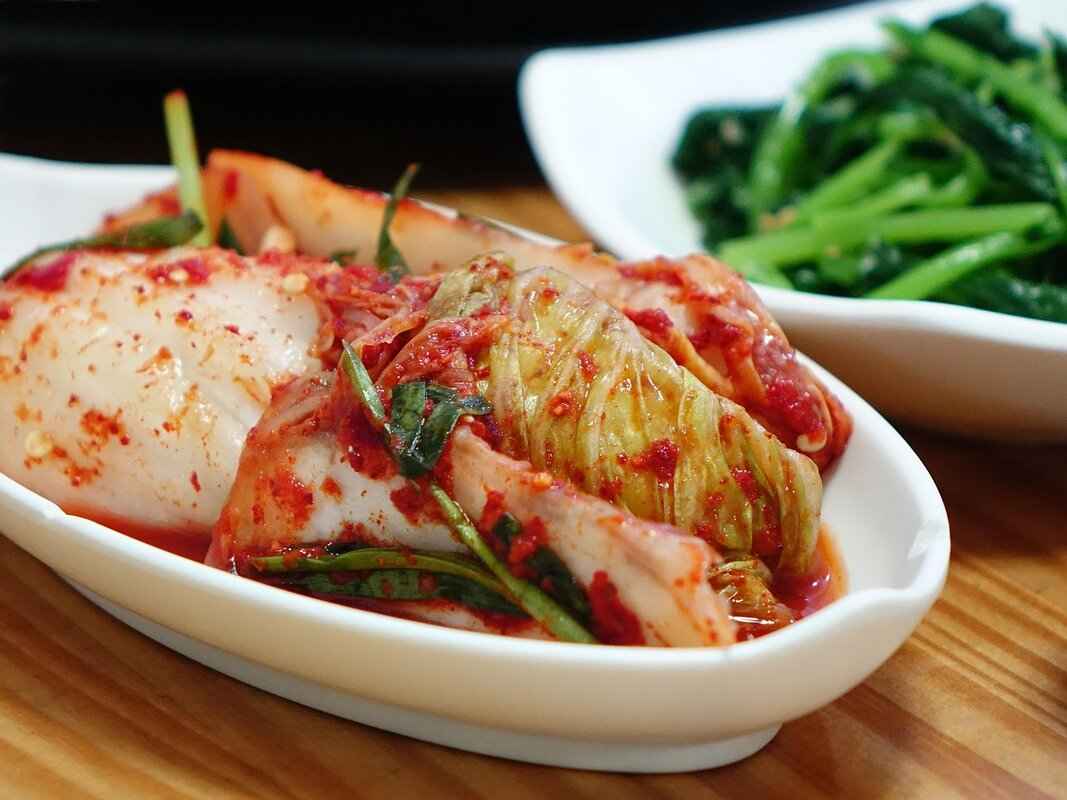
Why is Kimchi Considered a Superfood?
Kimchi, a staple of Korean cuisine, has garnered a reputation as a superfood due to its impressive nutritional profile and myriad health benefits. This fermented dish, primarily made from napa cabbage and radishes, is not just a flavorful addition to meals but also a powerhouse of essential nutrients. In this section, we will explore the reasons why kimchi is considered a superfood and how it can significantly enhance your diet.
Kimchi is packed with a variety of vitamins and minerals that are vital for overall health. Some of the key nutrients include:
- Vitamin A: Essential for maintaining healthy vision and immune function.
- Vitamin C: A powerful antioxidant that helps protect the body from free radicals.
- Vitamin K: Important for blood clotting and bone health.
- Folate: Crucial for DNA synthesis and repair, making it especially important for pregnant women.
- Potassium: Helps regulate blood pressure and supports heart health.
One of the standout features of kimchi is its high content of probiotics, which are beneficial bacteria that contribute to a healthy gut microbiome. Regular consumption of kimchi can:
- Improve digestion by enhancing the gut flora.
- Boost the immune system, helping the body ward off illnesses.
- Reduce inflammation, which is linked to various chronic diseases.
Yes, kimchi is rich in antioxidants that combat oxidative stress in the body. The fermentation process enhances the availability of these antioxidants, which include:
- Beta-carotene: Converts into vitamin A and supports skin health.
- Flavonoids: Known for their anti-inflammatory properties.
- Glucosinolates: Compounds that may have cancer-fighting properties.
Incorporating kimchi into your diet may also aid in weight management. The fermentation process not only makes kimchi low in calories but also helps regulate appetite due to the presence of fiber and probiotics. Studies suggest that fermented foods can improve metabolic health, which is crucial for maintaining a healthy weight.
Research indicates that the ingredients in kimchi, such as garlic and chili peppers, may contribute to better heart health. These ingredients can help lower cholesterol levels and improve circulation. Furthermore, the high fiber content in kimchi supports cardiovascular health by aiding in the reduction of blood pressure.
In summary, kimchi is not just a delicious addition to meals; it is a nutritional powerhouse that provides numerous health benefits. From its rich array of vitamins and minerals to its probiotic content, kimchi stands out as a superfood that can enhance your overall health. Incorporating this fermented delight into your diet can lead to improved digestion, better immune function, and even support for weight management and heart health.
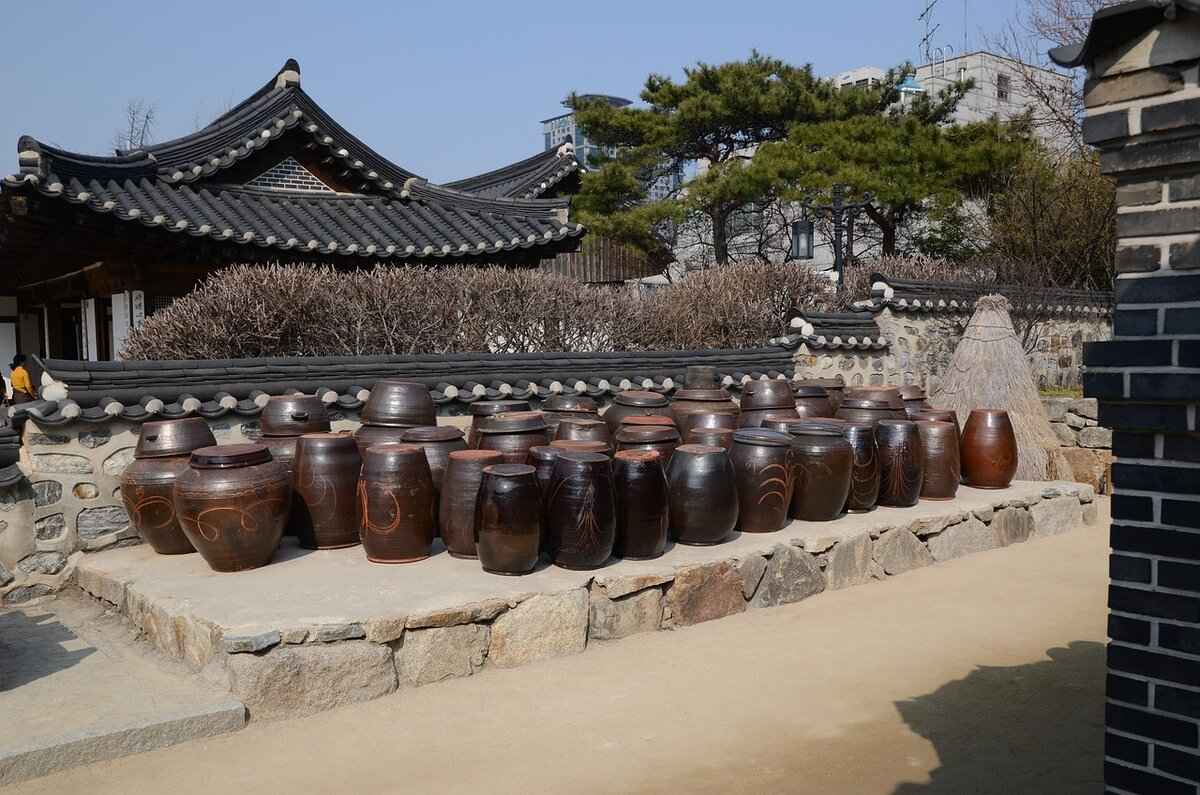
Health Benefits of Kimchi
Kimchi, a staple in Korean cuisine, is not just a delicious fermented dish; it is also a powerhouse of health benefits. Known for its unique flavors and vibrant colors, kimchi is made primarily from napa cabbage and radishes, along with a variety of spices. Incorporating kimchi into your diet can lead to numerous health advantages that are backed by research.
The health benefits of kimchi are extensive, offering everything from improved digestion to enhanced immune function. Here, we explore the key advantages of including this fermented delicacy in your daily meals.
One of the most significant benefits of kimchi is its high probiotic content. Probiotics are beneficial bacteria that help maintain a healthy gut microbiome. Research has shown that these probiotics can:
- Enhance digestion by breaking down food more efficiently.
- Reduce symptoms of irritable bowel syndrome (IBS).
- Support overall gut health, leading to a more balanced digestive system.
Kimchi is loaded with essential vitamins and minerals. It is particularly rich in:
- Vitamin C – Boosts the immune system and promotes skin health.
- Vitamin K – Important for bone health and blood clotting.
- Beta-carotene – An antioxidant that helps combat oxidative stress.
The fermentation process enhances the antioxidant properties of kimchi. Antioxidants play a crucial role in neutralizing free radicals in the body, which can help reduce the risk of chronic diseases such as:
- Heart disease
- Cancer
- Diabetes
Including kimchi in your diet may also assist in weight management. Studies suggest that fermented foods can help regulate appetite and improve metabolism. The low-calorie content of kimchi, combined with its high fiber content, can make you feel fuller for longer, potentially aiding in weight loss.
The combination of probiotics, vitamins, and antioxidants in kimchi contributes to a stronger immune system. Regular consumption can help the body fend off illnesses, making it a beneficial addition to your diet, especially during cold and flu season.
Some studies indicate that kimchi may possess anti-inflammatory properties, which can help mitigate inflammation-related conditions. This is particularly relevant for individuals dealing with arthritis or other inflammatory diseases.
In conclusion, incorporating kimchi into your diet can provide a multitude of health benefits, from improving gut health to supporting your immune system. With its rich nutrient profile and probiotic content, kimchi is indeed a fermented superfood that can enhance overall well-being.
Probiotics and Gut Health
Kimchi, a staple in Korean cuisine, is not just a flavorful addition to meals but also a nutritional powerhouse. One of its most significant health benefits lies in its rich content of probiotics, which are live microorganisms that provide various health benefits when consumed in adequate amounts. This section will explore how the probiotics found in kimchi can promote a healthy gut microbiome, aiding digestion and enhancing overall gut health.
The gut microbiome is a complex community of microorganisms residing in our digestive tract. A balanced microbiome is essential for optimal digestion, nutrient absorption, and immune function. Unfortunately, factors such as poor diet, stress, and antibiotic use can disrupt this balance, leading to digestive issues and other health problems. This is where kimchi comes into play.
- How do probiotics in kimchi aid digestion?
- Can kimchi improve gut health?
- What are the additional benefits of probiotics?
The probiotics in kimchi, particularly strains like Lactobacillus, help break down food more efficiently. They ferment the fibers in vegetables, creating short-chain fatty acids that not only nourish the gut lining but also enhance the absorption of nutrients. This process can reduce symptoms of bloating and discomfort, making digestion smoother.
Studies have shown that regular consumption of probiotic-rich foods like kimchi can increase the diversity of gut bacteria. A diverse gut microbiome is linked to better health outcomes, including a stronger immune system and reduced inflammation. By incorporating kimchi into your diet, you support the growth of beneficial bacteria, which can outcompete harmful ones.
Beyond aiding digestion, probiotics found in kimchi can also play a role in mental health. Emerging research suggests a connection between gut health and mood regulation, often referred to as the gut-brain axis. Consuming kimchi may help alleviate symptoms of anxiety and depression by promoting a balanced gut microbiome.
Furthermore, kimchi’s fermentation process enhances its nutritional profile. During fermentation, vitamins such as Vitamin C and Vitamin K are preserved and even increased, making kimchi not only a source of probiotics but also a rich source of essential nutrients. This combination of probiotics and vitamins contributes to overall health, making kimchi a valuable addition to a balanced diet.
Incorporating kimchi into your meals can be simple and delicious. Whether added to stir-fries, soups, or enjoyed as a side dish, the possibilities are endless. As you explore the world of kimchi, remember that the key to reaping its benefits lies in regular consumption. Aim to include this fermented delicacy in your daily meals to support your gut health and overall well-being.
In conclusion, the probiotics found in kimchi offer significant benefits for gut health. By promoting a balanced microbiome, aiding digestion, and potentially enhancing mental health, kimchi stands out as a fermented superfood that can easily be integrated into a healthy lifestyle.
Rich in Antioxidants
Kimchi, a beloved staple of Korean cuisine, is not only a flavorful dish but also a powerhouse of health benefits, particularly due to its rich antioxidant content. Antioxidants play a crucial role in protecting our bodies from oxidative stress, which can lead to chronic diseases and aging. In this section, we will delve into the specific antioxidants found in kimchi and their significant health implications.
What Are Antioxidants?
Antioxidants are molecules that neutralize free radicals—unstable atoms that can cause cellular damage. By combating oxidative stress, antioxidants help maintain overall health and well-being. Some of the key antioxidants found in kimchi include:
- Vitamin C: This essential vitamin is known for its ability to boost the immune system and enhance skin health. Kimchi is a rich source of vitamin C, which helps in collagen production and protects skin cells from damage.
- Beta-Carotene: A precursor to vitamin A, beta-carotene is vital for maintaining healthy vision and skin. It also has anti-inflammatory properties that can help reduce the risk of chronic diseases.
- Flavonoids: These plant compounds have been shown to have anti-inflammatory and antioxidant effects. Flavonoids in kimchi can help lower blood pressure and improve heart health.
- Glucosinolates: Present in fermented vegetables like cabbage, these compounds have been linked to cancer prevention. They work by promoting detoxification processes in the body.
Health Implications of Antioxidants in Kimchi
The antioxidants in kimchi contribute to a myriad of health benefits:
- Enhanced Immune Function: Regular consumption of kimchi can strengthen the immune system, thanks to its high vitamin C content and probiotics, which support gut health.
- Reduced Inflammation: The anti-inflammatory properties of antioxidants can help alleviate symptoms of chronic diseases such as arthritis and heart disease.
- Improved Skin Health: Antioxidants like vitamin C and beta-carotene can enhance skin elasticity and reduce the appearance of wrinkles, promoting a youthful complexion.
- Potential Cancer Prevention: The glucosinolates in kimchi may play a role in reducing the risk of certain cancers by aiding the body’s detoxification processes.
How to Maximize Antioxidant Intake from Kimchi
To reap the full benefits of antioxidants in kimchi, consider the following tips:
- Choose fresh, high-quality ingredients when making kimchi at home to ensure maximum nutrient retention.
- Incorporate a variety of vegetables in your kimchi, such as carrots and radishes, to increase the diversity of antioxidants.
- Consume kimchi raw or lightly cooked to preserve its probiotic content and antioxidant properties.
In summary, kimchi is a delicious and nutritious food that is rich in antioxidants, offering numerous health benefits. By incorporating this fermented superfood into your diet, you can enhance your overall health and well-being.
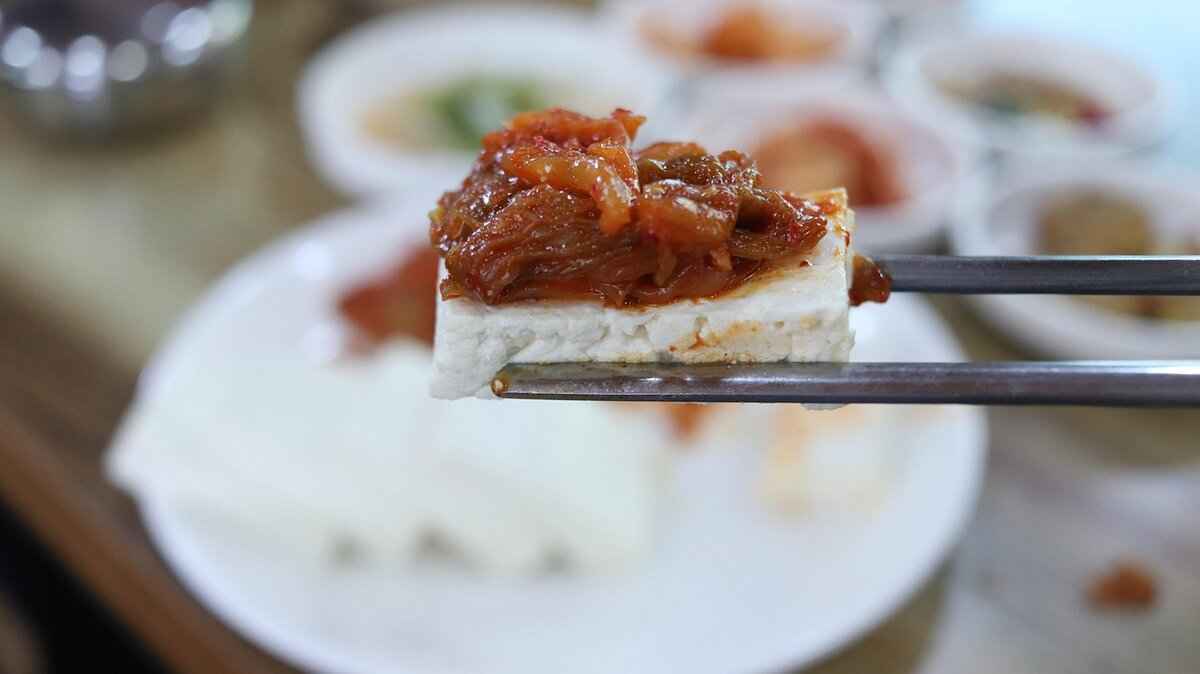
How to Make Kimchi at Home
Making kimchi at home is not just a culinary task; it’s an art form that connects you to Korean culture and tradition. This guide will take you through a step-by-step process to create your very own batch of this fermented delight, ensuring you enjoy the authentic flavors and health benefits that kimchi offers.
Before diving into the preparation, it’s crucial to gather the right ingredients. Here’s a list of what you need:
- Napa cabbage – The primary vegetable used in kimchi.
- Daikon radish – Adds crunch and flavor.
- Garlic – Provides a pungent aroma.
- Ginger – Enhances the overall taste.
- Korean red pepper flakes (gochugaru) – Gives kimchi its signature heat.
- Fish sauce or soy sauce – Adds umami depth.
- Sugar – Balances the flavors.
- Salt – Essential for the fermentation process.
Now that you have your ingredients, follow these steps to make kimchi:
- Prepare the Cabbage: Cut the napa cabbage into quarters and remove the core. Rinse under cold water and soak it in a saltwater brine for 2 hours. This process helps to draw out moisture and softens the cabbage.
- Make the Kimchi Paste: In a bowl, combine minced garlic, grated ginger, gochugaru, fish sauce, sugar, and a bit of water. Mix until you achieve a thick paste.
- Combine Ingredients: After the cabbage has soaked, rinse it thoroughly to remove excess salt. Drain and mix it with the daikon radish and the kimchi paste. Ensure that every piece is well-coated.
- Pack the Kimchi: Transfer the mixture into a clean, airtight jar. Press down firmly to eliminate air pockets, leaving about an inch of space at the top.
- Fermentation: Leave the jar at room temperature for 1-5 days, depending on your taste preference. Check daily for flavor and adjust the fermentation time based on how tangy you want your kimchi.
- Storage: Once fermented to your liking, store the kimchi in the refrigerator. It can last for several weeks, and the flavors will continue to develop over time.
The fermentation process is what transforms your fresh ingredients into the tangy, complex flavors of kimchi. During fermentation, beneficial bacteria break down sugars and produce lactic acid, which acts as a natural preservative. This not only enhances the flavor but also contributes to the health benefits associated with kimchi.
As you embark on your kimchi-making journey, remember that each batch can be unique. Feel free to experiment with different vegetables and spice levels to find your perfect recipe. Enjoy the process and the delicious results!
Essential Ingredients for Kimchi
Creating authentic kimchi requires a careful selection of ingredients, each contributing to the overall flavor and health benefits. Understanding these key components is essential for anyone looking to master this traditional dish. Here’s a detailed look at the essential ingredients needed for a classic kimchi recipe:
- Napa Cabbage: This is the primary ingredient in most kimchi recipes. Its crisp texture and ability to absorb flavors make it a perfect base.
- Radishes: Commonly used varieties include Korean radish (mu) or daikon. They add crunch and a peppery flavor that balances the cabbage.
- Salt: Crucial for the fermentation process, salt helps draw out moisture from the vegetables, creating the brine that allows for fermentation.
- Garlic: This aromatic ingredient not only adds depth of flavor but also contributes to the health benefits of kimchi, thanks to its antibacterial properties.
- Ginger: Fresh ginger adds a zesty kick and works synergistically with garlic to enhance the overall flavor profile.
- Red Pepper Flakes (Gochugaru): This Korean chili powder is essential for achieving kimchi’s characteristic heat and vibrant red color. The level of spiciness can be adjusted based on personal preference.
- Fish Sauce: A traditional ingredient that adds umami and depth. For a vegetarian option, you can substitute with soy sauce or a vegan fish sauce alternative.
- Green Onions: These add a fresh, mild onion flavor and a pop of color to the kimchi.
- Sugar: A small amount of sugar helps balance the flavors and supports the fermentation process by feeding the beneficial bacteria.
These ingredients work together to create the complex flavors and health benefits that kimchi is known for. The fermentation process not only enhances the taste but also increases the nutritional value of the dish, making it a fermented superfood.
When preparing kimchi, it’s important to choose high-quality, fresh ingredients. The quality of the vegetables can significantly affect the final product, so sourcing them from local markets or trusted suppliers is recommended. Additionally, the proportions of each ingredient can be adjusted to suit individual tastes, allowing for a personalized kimchi experience.
As you embark on your kimchi-making journey, remember that the process of fermentation takes time and patience. The flavors will continue to develop and deepen over days and weeks, making the wait worthwhile. Enjoy the process and the delicious results of your homemade kimchi!
Fermentation Process Explained
The fermentation process is a fascinating and essential aspect of kimchi preparation, playing a crucial role in developing its unique flavors and health benefits. Understanding how fermentation works can enhance your appreciation of this beloved dish and help you master the art of making it at home.
Fermentation is a natural metabolic process where microorganisms like bacteria, yeast, or molds convert sugars and starches into acids, gases, or alcohol. In the case of kimchi, lactic acid bacteria (LAB) are primarily responsible for fermentation. These beneficial bacteria thrive in the anaerobic (oxygen-free) environment created when vegetables are submerged in a brine solution.
The fermentation of kimchi begins with the salting of vegetables, which draws out moisture and creates an environment conducive to LAB growth. As the vegetables ferment, these bacteria convert the sugars present in the vegetables into lactic acid. This process not only preserves the vegetables but also enhances their flavor, giving kimchi its signature tangy taste.
To achieve the best results when fermenting kimchi, consider the following factors:
- Temperature: Fermentation occurs best at temperatures between 60°F to 75°F (15°C to 24°C). Warmer temperatures speed up fermentation, while cooler temperatures slow it down.
- Time: The duration of fermentation can vary. Typically, kimchi ferments for anywhere from 1 to 14 days. Taste your kimchi daily to find your preferred level of fermentation.
- Ingredients: The quality and type of ingredients used can significantly impact the fermentation process. Fresh, high-quality vegetables and the right balance of spices will yield the best results.
To ensure a successful fermentation process, follow these best practices:
- Use clean utensils: Always use clean, non-reactive utensils to prevent contamination.
- Submerge the vegetables: Ensure that the vegetables are fully submerged in the brine to create an anaerobic environment.
- Taste regularly: Check the flavor of your kimchi daily to determine when it has reached your desired level of fermentation.
- Store properly: Once fermented to your liking, transfer the kimchi to the refrigerator to slow down the fermentation process and preserve its flavor.
Fermentation not only enhances the flavor of kimchi but also boosts its nutritional profile. The process increases the bioavailability of vitamins and minerals and introduces probiotics, which are beneficial for gut health. Regular consumption of fermented kimchi can aid digestion, improve immune function, and contribute to overall well-being.
In conclusion, understanding the fermentation process is key to mastering the art of kimchi making. By following the optimal conditions and best practices outlined above, you can create delicious, healthful kimchi that reflects your personal taste preferences.
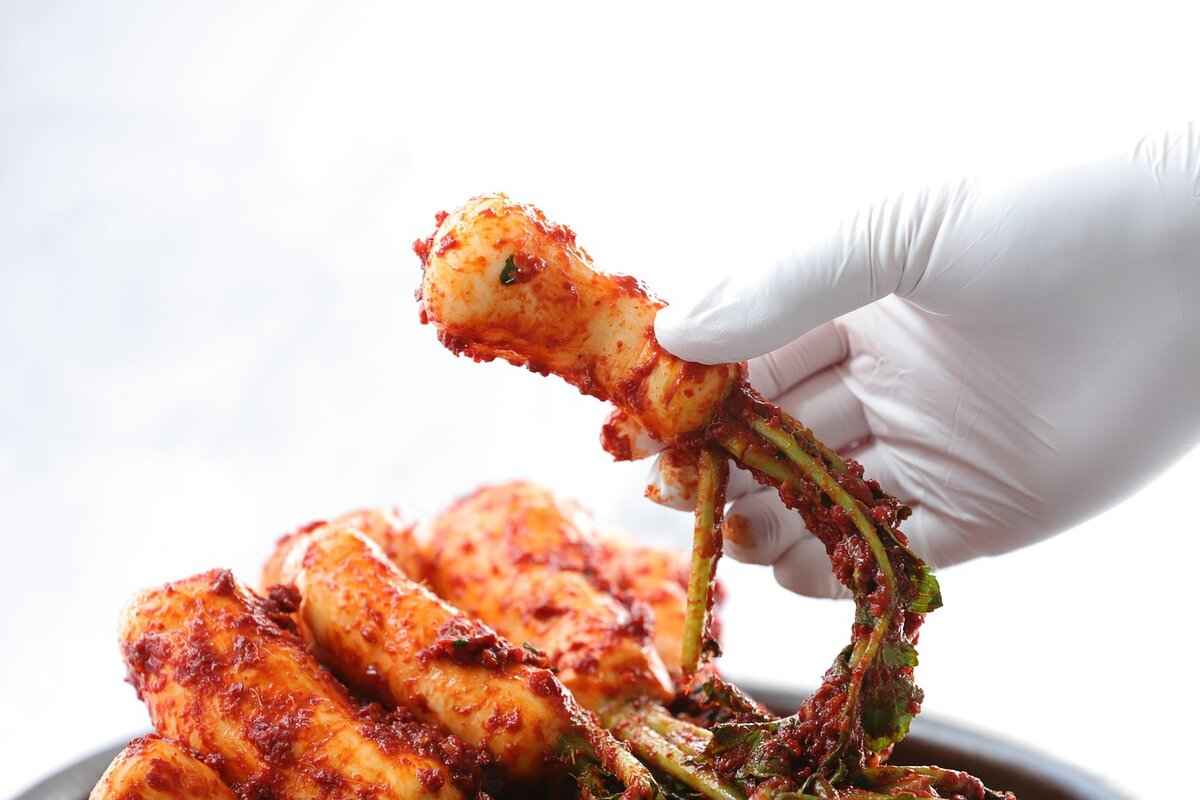
Different Types of Kimchi
showcase the incredible diversity of this iconic Korean dish. Each variety boasts its own unique flavors, textures, and ingredients, reflecting regional preferences and seasonal availability. In this section, we will explore some of the most popular types of kimchi, highlighting their distinct characteristics and culinary significance.
- Baechu Kimchi: This is perhaps the most well-known type of kimchi, made primarily from napa cabbage. The cabbage is salted and layered with a spicy mixture of gochugaru (Korean red pepper flakes), garlic, ginger, and often fish sauce. The result is a vibrant and flavorful dish that can be enjoyed fresh or fermented for a tangy kick.
- Kkakdugi: Unlike Baechu, Kkakdugi is made from diced radishes, usually mu (Korean radish). This variety is known for its crunchy texture and slightly sweet flavor, making it a refreshing accompaniment to rich dishes. The fermentation process enhances its flavor, making it a staple in many Korean meals.
- Oisobagi: This type of kimchi is prepared using cucumbers, which are stuffed with a mixture similar to that of Baechu Kimchi. Oisobagi is often enjoyed during the summer months due to its refreshing taste and hydrating properties. The cucumbers retain their crunch, providing a delightful contrast to the spicy filling.
- Pa Kimchi: Made with green onions, Pa Kimchi is less common but equally delicious. The green onions are marinated in a spicy paste, allowing them to absorb the flavors while retaining their crispness. This variety is often served as a side dish or used as a topping for rice and other dishes.
- Chonggak Kimchi: Also known as “young radish kimchi,” Chonggak Kimchi uses whole young radishes, including their greens. This variety has a unique flavor profile and is often enjoyed during the winter months. Its slightly spicy and tangy taste pairs well with hearty meals.
Seasonal Variations of kimchi also play a significant role in Korean cuisine. For instance, spring kimchi may incorporate fresh greens and herbs, while autumn versions might include ingredients like persimmons or chestnuts. These seasonal adaptations not only enhance the flavor but also reflect the cultural practices surrounding food and harvest.
Understanding the different types of kimchi is essential for anyone looking to explore Korean cuisine. Each variety offers a unique taste experience, making kimchi a versatile ingredient that can elevate any meal. Whether you prefer the classic Baechu or the refreshing Oisobagi, there is a type of kimchi to suit every palate.
Baechu Kimchi vs. Kkakdugi
Baechu Kimchi and Kkakdugi are two of the most cherished varieties of kimchi, each offering distinct flavors and textures that reflect the diversity of Korean cuisine. Understanding the differences between these two types can enhance your culinary experience and appreciation for this traditional dish.
Baechu Kimchi, often referred to as napa cabbage kimchi, is made primarily from fermented napa cabbage. The preparation involves salting the cabbage to draw out moisture, followed by a mixture of spices, including gochugaru (Korean red pepper flakes), garlic, ginger, and fish sauce. This variety is known for its crisp texture and spicy, tangy flavor, making it a staple in Korean households.
Kkakdugi is a type of kimchi made from diced radishes, typically mu (Korean radish). The preparation process is similar to that of Baechu Kimchi but involves cutting the radish into small cubes before salting and seasoning. Kkakdugi is characterized by its crunchy texture and slightly sweet, refreshing flavor, which pairs well with various Korean dishes.
| Ingredient | Baechu Kimchi | Kkakdugi |
|---|---|---|
| Main Vegetable | Napa Cabbage | Korean Radish |
| Texture | Crisp and leafy | Crunchy and firm |
| Flavor Profile | Spicy and tangy | Sweet and refreshing |
The preparation methods for Baechu and Kkakdugi kimchi, while similar, have their nuances. For Baechu Kimchi, the whole cabbage is salted and then coated with the spice mixture, allowing the flavors to penetrate the leaves. In contrast, Kkakdugi requires the radishes to be cut into cubes before salting, which helps the seasoning adhere better to each piece.
When it comes to taste, Baechu Kimchi is often described as bold and complex, thanks to the layering of flavors from the spices and fermentation. The napa cabbage absorbs the seasoning well, resulting in a robust flavor. On the other hand, Kkakdugi offers a more subtle and refreshing taste, with the natural sweetness of the radish shining through, balanced by the spiciness of the seasoning.
Choosing between Baechu and Kkakdugi often depends on personal preference and the dishes you plan to serve them with. Baechu Kimchi pairs excellently with hearty meals, while Kkakdugi can complement lighter dishes and soups, adding a delightful crunch and freshness.
In summary, both Baechu and Kkakdugi kimchi offer unique flavors and textures that enhance the richness of Korean cuisine. Exploring these varieties can deepen your understanding and appreciation of kimchi as a vital component of Korean culinary heritage.
Seasonal Variations of Kimchi
Kimchi, a beloved staple of Korean cuisine, is not only versatile in its ingredients but also in its preparation methods, which are often influenced by the changing seasons. Each season brings a new array of fresh vegetables and herbs, allowing for unique kimchi recipes that reflect the flavors and textures of the time of year.
Seasonal ingredients play a crucial role in the preparation and flavor of kimchi. For example, in the spring, young radishes and spring onions are abundant, making them ideal for light, fresh kimchi varieties. In contrast, the fall harvest brings heartier vegetables like napa cabbage and daikon radish, which can withstand longer fermentation times, resulting in richer flavors.
- Ingredients: Young radishes, spring onions, garlic, ginger, and a light seasoning of gochugaru (Korean red pepper flakes).
- Flavor Profile: Crisp, refreshing, and slightly spicy, perfect for pairing with lighter dishes.
Spring kimchi is often characterized by its crunchy texture and vibrant colors, making it a delightful addition to meals as the weather warms.
- Ingredients: Cucumbers, zucchini, and fresh herbs like mint and perilla.
- Flavor Profile: Light, cooling, and slightly tangy, offering a refreshing contrast to the summer heat.
During the summer, many people prefer to make oi sobagi, or cucumber kimchi, which is perfect for hot days. The use of fresh herbs enhances the overall flavor, making it a popular choice for barbecues and picnics.
- Ingredients: Napa cabbage, radishes, and a variety of spices.
- Flavor Profile: Deep, savory, and complex, often incorporating fermented fish sauce or shrimp paste for added umami.
As the weather cools, kimchi recipes tend to become more robust, utilizing ingredients that can develop deeper flavors through fermentation. This is the season for baechu kimchi, which is made with napa cabbage and is often enjoyed alongside hearty stews.
- Ingredients: Various root vegetables, such as carrots and turnips, along with fermented ingredients for depth.
- Flavor Profile: Rich, fermented, and complex, perfect for warming winter meals.
In winter, kimchi becomes a crucial part of the diet, providing essential nutrients during colder months. The use of fermented ingredients helps to enhance the flavors, making winter kimchi a comforting addition to any meal.
Seasonal variations of kimchi not only showcase the versatility of this fermented dish but also highlight the importance of using fresh, local ingredients. By adapting recipes to the seasons, home cooks can create kimchi that is not only flavorful but also a reflection of the time of year, enhancing the overall culinary experience.
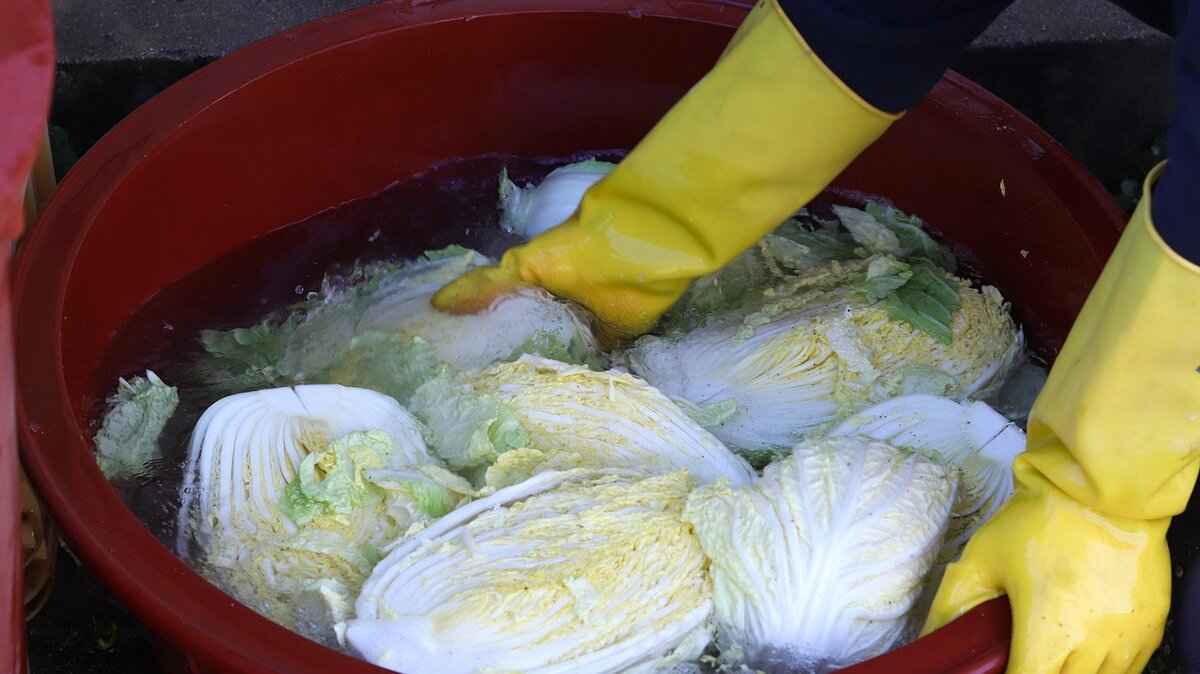
Incorporating Kimchi into Your Diet
can be a delightful journey of flavor and health. This fermented superfood not only enhances the taste of your meals but also adds a wealth of nutritional benefits. Here, we explore practical tips and creative ideas to seamlessly integrate kimchi into your daily culinary routine.
Kimchi is not just a side dish; it can transform your meals into something extraordinary. Its unique blend of spices and fermented goodness brings depth and complexity to various dishes. Plus, the probiotics in kimchi support gut health, making it a smart addition to your diet.
- As a Topping: Use kimchi as a topping for rice bowls, tacos, or burgers. The crunch and tanginess can elevate even the simplest meals.
- In Soups and Stews: Add a spoonful of kimchi to your soups or stews for a burst of flavor. It pairs well with miso soup or ramen, adding a probiotic punch.
- In Salads: Toss kimchi into salads for a spicy twist. It can replace traditional dressings, providing both flavor and nutrition.
- As a Side Dish: Serve kimchi alongside grilled meats or fish. Its acidity cuts through richness, balancing your plate perfectly.
Exploring innovative recipes can make kimchi an exciting component of your meals. Here are a few ideas:
- Kimchi Fried Rice: Stir-fry leftover rice with vegetables and kimchi for a quick and satisfying dish. Top with a fried egg for added protein.
- Kimchi Quesadillas: Fill tortillas with cheese and kimchi, then grill until crispy. This fusion dish is sure to impress!
- Kimchi Pancakes: Combine kimchi with a simple batter and pan-fry for savory pancakes that make a great snack or breakfast option.
Integrating kimchi into your meals is not just about flavor; it’s about health. The probiotics in kimchi can enhance digestion, while its high vitamin content supports overall wellness. Regular consumption may also boost your immune system, making it a valuable addition to your diet.
To maintain the freshness of your kimchi, store it in an airtight container in the refrigerator. The cooler temperature slows down the fermentation process, allowing you to enjoy its flavor for longer. Remember, kimchi can continue to ferment, changing its taste over time, so consume it within a few weeks for the best experience.
Incorporating kimchi into your meals can transform your culinary experience. With its versatility and health benefits, kimchi is more than just a side dish; it’s a flavorful addition that can enhance your overall diet. Whether you prefer traditional Korean dishes or modern fusion recipes, the possibilities are endless. Start experimenting today and discover how this fermented delight can spice up your meals!
Kimchi in Traditional Dishes
Kimchi is not just a side dish in Korean cuisine; it is a versatile ingredient that enhances the flavor and nutritional value of numerous traditional dishes. This section delves into some of the most popular recipes that feature kimchi as a key ingredient, showcasing its importance in Korean culinary traditions.
- Kimchi Jjigae (Kimchi Stew): This hearty stew is a quintessential Korean comfort food. Made with aged kimchi, tofu, pork, and a variety of vegetables, kimchi jjigae is both flavorful and satisfying. The fermentation of the kimchi adds depth to the broth, making it a perfect dish for cold weather.
- Kimchi Fried Rice (Kimchi Bokkeumbap): A popular way to use leftover kimchi, this dish combines rice, kimchi, and various vegetables, often topped with a fried egg. It’s a quick and delicious meal that packs a punch of flavor, perfect for any time of the day.
- Kimchi Pancakes (Kimchi Jeon): These savory pancakes are made by mixing flour, water, and chopped kimchi, then pan-frying until crispy. They serve as a fantastic appetizer or snack, often accompanied by a soy dipping sauce.
- Kimchi Tofu Stir-Fry: This dish combines stir-fried tofu with kimchi and vegetables, creating a healthy and flavorful option. The combination of textures and flavors makes it a favorite among both vegetarians and meat lovers.
Kimchi is not only a flavor enhancer but also a nutritional powerhouse. Its rich probiotic content aids digestion and contributes to gut health, making it a beneficial addition to meals. The spicy and tangy notes of kimchi elevate the overall profile of the dishes, providing a unique taste that is both complex and satisfying.
Yes, different regions in Korea have their own variations of kimchi dishes. For example, in the coastal areas, kimchi jjigae may include seafood, while in the countryside, it might be made with locally sourced vegetables. These regional differences showcase the adaptability of kimchi in various culinary contexts.
Absolutely! The versatility of kimchi extends beyond traditional Korean cuisine. It can be incorporated into various international dishes, such as:
- Kimchi Quesadillas: A fusion dish where kimchi is added to cheese-filled tortillas, creating a spicy, cheesy delight.
- Kimchi Burgers: Adding kimchi to burgers gives them an exciting twist, enhancing both flavor and texture.
- Kimchi Ramen: A modern take on ramen, where kimchi is used to spice up the broth, providing a unique and delicious flavor.
Incorporating kimchi into various recipes not only enhances flavor but also introduces the health benefits associated with this fermented superfood. Its adaptability makes it a favorite among chefs and home cooks alike, proving that kimchi is more than just a side dish—it is a culinary star.
Creative Ways to Use Kimchi
Kimchi, a beloved staple of Korean cuisine, is not just limited to traditional dishes. Its unique flavor profile and health benefits make it a versatile ingredient that can elevate a variety of modern recipes. Here are some innovative ways to incorporate kimchi into your everyday meals:
- Kimchi Fried Rice: A classic dish that takes advantage of leftover rice. Simply stir-fry your rice with kimchi, vegetables, and a protein of your choice. The fermentation adds a delightful tang that enhances the overall flavor.
- Kimchi Tacos: Transform your taco night by adding kimchi as a topping. Pair it with grilled meats, avocado, and a drizzle of spicy mayo for a fusion twist that will impress your guests.
- Kimchi Grilled Cheese: Elevate your grilled cheese sandwich by adding a layer of kimchi. The spicy, fermented crunch complements the melted cheese beautifully, creating a satisfying contrast of textures.
- Kimchi Soup: Incorporate kimchi into a warm, comforting soup. Combine it with broth, tofu, and your choice of vegetables for a nourishing meal that’s perfect for chilly days.
- Kimchi Pancakes: Mix chopped kimchi into a batter of flour, water, and eggs to create savory pancakes. These can be served as a snack or appetizer and are perfect for dipping in soy sauce.
- Kimchi Quesadillas: Spread kimchi on a tortilla with cheese and other fillings, then grill until crispy. The result is a spicy, cheesy delight that’s great for lunch or dinner.
- Kimchi Pasta: For a unique twist on pasta dishes, mix kimchi with your favorite pasta, sautéed vegetables, and a protein. The kimchi adds a surprising depth of flavor that will have everyone asking for seconds.
- Kimchi Salad Dressings: Blend kimchi with oil, vinegar, and spices to create a zesty salad dressing. This adds a punch of flavor to any salad, making it more exciting and nutritious.
These creative uses of kimchi not only highlight its versatility but also provide a way to enjoy its numerous health benefits. Whether you’re a seasoned kimchi lover or new to this fermented delight, experimenting with these ideas can bring a fresh perspective to your meals. Don’t hesitate to mix and match ingredients to find your perfect kimchi-infused dish!
By incorporating kimchi into your cooking, you can enjoy its unique flavors while also reaping its health benefits, making every meal a little more exciting and nutritious.
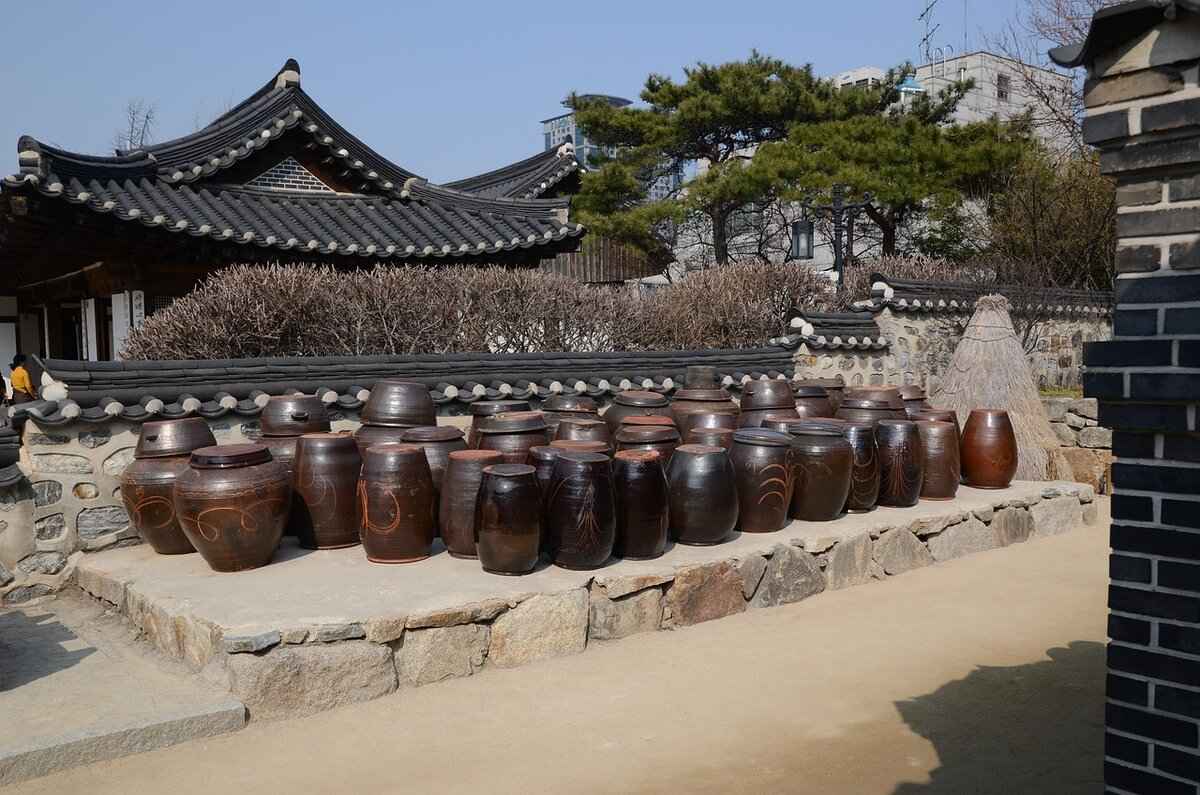
Kimchi’s Cultural Significance
Kimchi is not just a food; it is a representation of Korean culture, history, and identity. This fermented delicacy has transcended its role as a mere side dish to become a symbol of Korean heritage. Its preparation and consumption are deeply embedded in the daily lives of Koreans, reflecting traditions that have been passed down through generations.
The importance of kimchi can be traced back to the Joseon Dynasty, where it was developed as a method of preserving vegetables through fermentation during harsh winters. This practice not only ensured food security but also fostered communal ties, as families and neighbors would come together to prepare large quantities of kimchi, a tradition known as Kimjang.
Kimjang is recognized by UNESCO as an Intangible Cultural Heritage of Humanity, highlighting its significance in promoting community bonding. During this process, families gather to share recipes, techniques, and stories, reinforcing social connections and cultural identity. The act of making kimchi is filled with rituals and customs that emphasize respect for the ingredients and the process itself.
Beyond its communal aspects, kimchi plays a vital role in Korean celebrations and rituals. It is an essential part of traditional Korean meals, often served at weddings, holidays, and family gatherings. The presence of kimchi on the table signifies hospitality and warmth, making it a staple in Korean households.
The variety of kimchi types also reflects the regional diversity of Korea. Different provinces have their own unique recipes and ingredients, showcasing local produce and flavors. For example, Baechu Kimchi, made from napa cabbage, is popular in the north, while Kkakdugi, a cubed radish kimchi, is favored in the south. This regional variation not only adds to the culinary landscape of Korea but also symbolizes the rich tapestry of its cultural identity.
As kimchi gains global popularity, it has begun to influence international cuisine, appearing in dishes far beyond its traditional roots. Chefs around the world are experimenting with kimchi in innovative ways, creating fusion dishes that incorporate its distinctive flavors. This globalization of kimchi reflects its adaptability and the growing appreciation for Korean culture worldwide.
In conclusion, kimchi is more than just a fermented food; it is a vital component of Korean culture that embodies community, tradition, and identity. From its historical significance to its role in modern cuisine, kimchi continues to be a cherished symbol of Korea, bridging the past with the present and fostering a sense of belonging among its people.
Kimjang: The Art of Kimchi Making
Kimjang is not just a method of making kimchi; it is a vibrant cultural tradition deeply embedded in Korean society. This communal practice, which typically occurs in late autumn, involves families and neighbors coming together to prepare large quantities of kimchi for the winter months. The process of kimjang serves as a significant social event, fostering bonds and reinforcing community ties.
At its core, kimjang is about collaboration and sharing. It begins with the gathering of fresh ingredients, primarily napa cabbage, radishes, and a variety of spices. The preparation involves not only the physical act of making kimchi but also the sharing of recipes, techniques, and stories. This communal effort transforms a simple food preparation task into a celebration of tradition and community.
The significance of kimjang extends beyond the kitchen. It is a ritual that strengthens social ties among participants. As families and neighbors work side by side, they share laughter, stories, and even the occasional friendly debate about the best kimchi recipe. This interaction fosters a sense of belonging and mutual support, essential elements in any community.
In 2013, UNESCO recognized kimjang as an Intangible Cultural Heritage of Humanity, highlighting its importance in preserving Korean culture. The practice is not only about the food; it embodies the values of cooperation, sharing, and solidarity. The act of making kimchi together is a way to pass down knowledge and traditions from generation to generation, ensuring that the art of kimchi making remains alive.
- Collaboration: Participants work together, each contributing their unique skills and knowledge.
- Storytelling: The process allows for the sharing of family histories and traditions, enriching the experience.
- Celebration: Kimjang is often accompanied by food, drinks, and music, turning the event into a festive occasion.
While kimjang has deep roots in tradition, it has also adapted to modern life. Many young people are rediscovering this practice as a way to connect with their heritage and build community in urban settings. Workshops and community events focused on kimjang are becoming increasingly popular, allowing individuals to experience this cultural treasure firsthand.
In essence, kimjang is much more than a method of making kimchi; it is a celebration of community, tradition, and identity. By participating in this communal practice, individuals not only contribute to their own culinary heritage but also strengthen the social fabric of their communities. As the world continues to evolve, the spirit of kimjang remains a vital part of Korean culture, ensuring that the art of kimchi making will endure for generations to come.
Kimchi in Global Cuisine
Kimchi has transcended its traditional Korean roots to become a beloved ingredient in kitchens around the globe. As chefs and home cooks alike experiment with this versatile fermented delicacy, its influence on global cuisine is increasingly evident. In this section, we will delve into how kimchi is being incorporated into various culinary traditions, showcasing its adaptability and appeal.
Chefs worldwide are embracing kimchi for its unique flavor profile and health benefits. From tacos to pasta, kimchi is being creatively integrated into a variety of dishes. Here are some popular ways kimchi is being used:
- Kimchi Tacos: A fusion of Korean and Mexican cuisine, tacos filled with kimchi and grilled meats offer a spicy, tangy twist to a classic dish.
- Kimchi Fried Rice: This simple yet delicious dish combines leftover rice with kimchi, vegetables, and an egg, making it a popular comfort food in many households.
- Kimchi Quesadillas: Adding kimchi to quesadillas elevates the flavor, providing a delightful crunch and zest that complements cheese and other fillings.
Home cooks are discovering that kimchi not only enhances the flavor of their meals but also adds a nutritional boost. The probiotics found in kimchi support gut health, making it a smart addition to any diet. Here are some reasons why home cooks are incorporating kimchi:
- Flavor Enhancement: The fermented taste of kimchi adds depth and complexity to dishes, making them more exciting and flavorful.
- Health Benefits: With its rich probiotic content, kimchi promotes digestive health and boosts the immune system, making it an attractive option for health-conscious individuals.
- Versatility: Kimchi can be used as a condiment, side dish, or main ingredient, allowing for endless culinary creativity.
As culinary boundaries continue to blur, chefs are finding innovative ways to showcase kimchi. Some of these creative uses include:
- Kimchi Pizza: Topped with kimchi and mozzarella, this unique pizza offers a delightful combination of flavors that surprises and satisfies.
- Kimchi Sushi Rolls: Incorporating kimchi into sushi adds a spicy kick that enhances traditional Japanese flavors.
- Kimchi Salad Dressings: Blending kimchi with oil and vinegar creates a zesty dressing that can elevate any salad.
The rise of kimchi in global cuisine reflects a broader trend toward embracing fermented foods. Chefs are increasingly recognizing the value of fermentation not only for flavor but also for health benefits. This trend is fostering a greater appreciation for traditional methods and ingredients, leading to a revival of interest in other fermented foods.
As kimchi continues to gain popularity, it is clear that its influence on global cuisine will only grow. From fine dining establishments to casual home kitchens, the incorporation of kimchi into various culinary traditions showcases its versatility and enduring appeal. Whether you’re a seasoned chef or a home cook, experimenting with kimchi can open up a world of flavor and nutrition.
Frequently Asked Questions
- What is kimchi made of?
Kimchi is primarily made from fermented vegetables, with napa cabbage and radishes being the most common. It’s seasoned with a variety of spices, including chili powder, garlic, and ginger, giving it that signature flavor.
- Why is kimchi considered a superfood?
Kimchi is packed with vitamins, minerals, and probiotics, making it a nutritional powerhouse. These components contribute to improved digestion, enhanced immune function, and overall health benefits.
- How can I incorporate kimchi into my diet?
There are countless ways to enjoy kimchi! You can add it to traditional dishes like bibimbap, use it in tacos, or even mix it into salads for a spicy kick. The possibilities are endless!
- Is kimchi good for gut health?
Absolutely! The probiotics found in kimchi help promote a healthy gut microbiome, aiding digestion and contributing to better gut health overall.
- Can I make kimchi at home?
Yes! Making kimchi at home is not only fun but also rewarding. With a few essential ingredients and some patience for fermentation, you can create your own delicious batch of kimchi.














